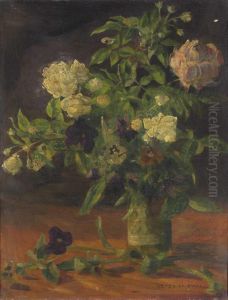Arpad Depaszthory Paintings
Árpád Dépasszthory, sometimes also spelled Dépaszthory, was a Hungarian artist known for his painting, graphic work, and illustrations. Born on May 8, 1881, in Budapest, Hungary, he became active in the early 20th century, a time when Hungarian art was undergoing significant changes with influences from Western European movements such as Impressionism and Post-Impressionism.
Dépasszthory's early education and artistic training are not well-documented, but it is known that he was part of the vibrant artistic scene in Budapest. He developed a style that incorporated elements of Realism and later on, influences of Modernism. His works often depicted landscapes, rural scenes, and everyday life, capturing the essence of Hungarian culture and the country's natural beauty.
During his career, Dépasszthory exhibited his work in various shows and was recognized for his contributions to Hungarian art. However, like many artists of his time, he may not have gained wide international recognition, with his fame being more regional. Despite this, his works are appreciated for their contribution to the Hungarian art narrative of the early 20th century.
Árpád Dépasszthory died on December 26, 1952. While he may not be as widely known as some of his contemporaries, his art remains a testament to the rich cultural and artistic heritage of Hungary. His pieces can be found in Hungarian museums and are occasionally featured in exhibitions that explore the art history of the region during that period.
